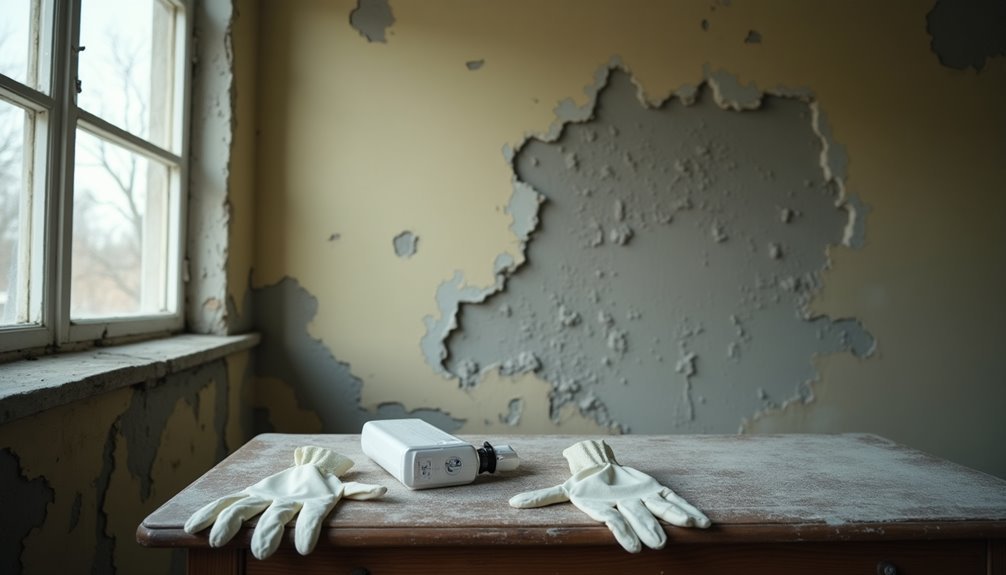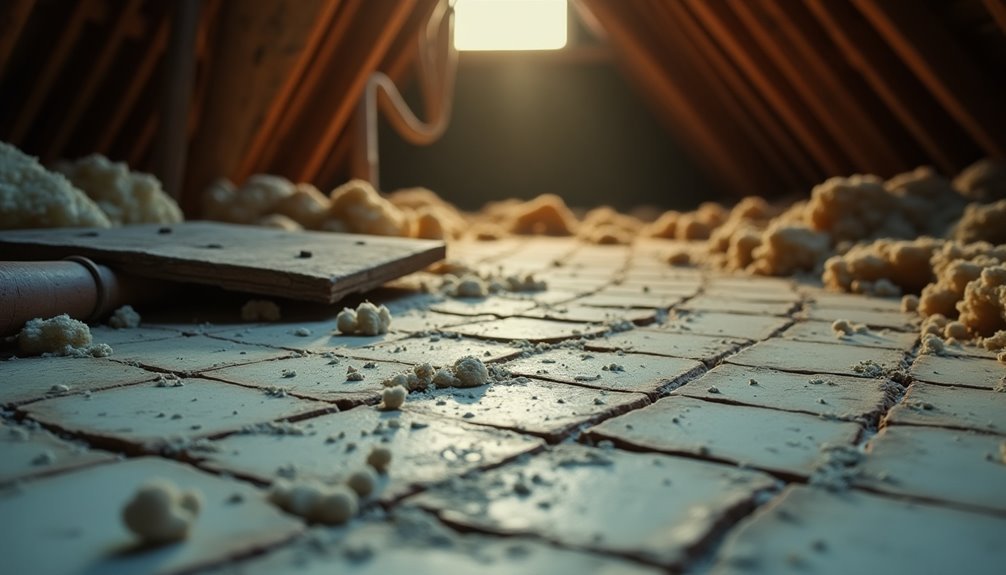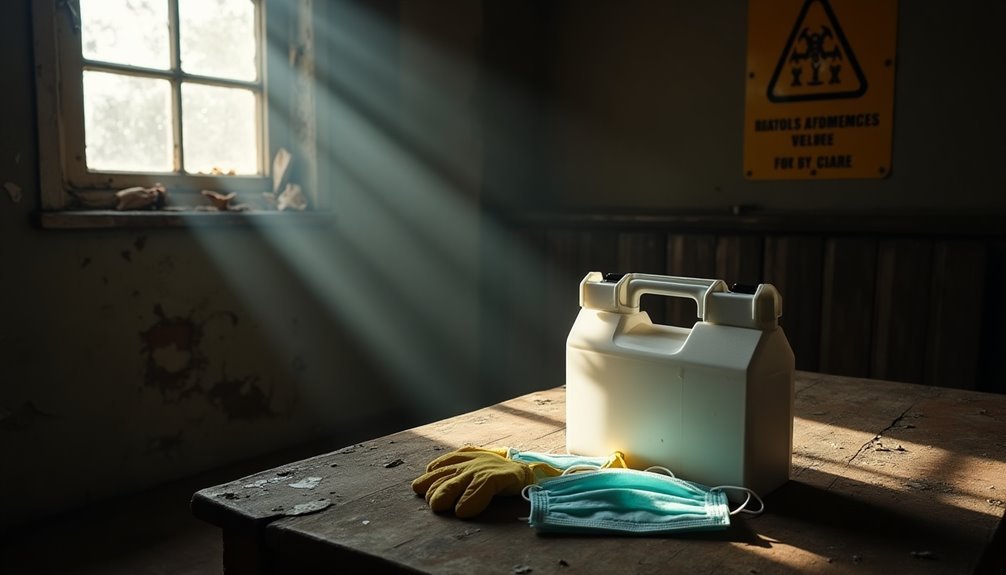Asbestos testing is crucial for ensuring your home's safety and safeguarding your health. Hidden asbestos can be present in attics, insulation, and various building materials. Exposure to asbestos can lead to serious health risks, including respiratory diseases and cancers that might not show symptoms for decades. By prioritizing testing, you can comply with federal and state regulations, ensuring legal safety during renovations. Hiring certified professionals ensures accurate results while minimizing risks. Understanding the importance of early detection allows for effective management or removal strategies. Discover how you can protect your home and health further.
Importance of Asbestos Testing

Asbestos testing plays a crucial role in safeguarding health and safety, ensuring compliance with regulations that protect everyone from potential exposure to hazardous materials. By identifying different asbestos types in building materials, you can implement appropriate management and removal strategies, mitigating serious health risks. Effective testing methods, such as bulk sampling and air monitoring, allow you to detect asbestos before it becomes airborne, minimizing exposure risks. Additionally, there is no safe level of exposure to asbestos, making testing even more critical.
Compliance with federal and state regulations is mandatory, especially for demolition or renovation of older buildings. Failing to conduct proper testing can lead to severe legal and financial consequences. Asbestos testing is also part of due diligence in real estate transactions, ensuring that you're aware of any potential liabilities.
Moreover, early detection of asbestos-containing materials (ACMs) helps you plan renovations effectively, avoiding unexpected costs and delays. Addressing asbestos issues upfront allows for cost-effective removal or containment, reducing project complications. Regular environmental monitoring not only protects ecological health but also preserves property values and enhances air quality. Ultimately, investing in asbestos testing provides you peace of mind, assuring a safe living or working environment free from hazardous materials.
Health Risks of Asbestos Exposure
Exposure to asbestos poses significant health risks, particularly concerning respiratory conditions and cancers. As you navigate your environment, it's vital to recognize potential asbestos symptoms, as they can manifest years after exposure. Long-term effects of asbestos exposure can lead to debilitating conditions such as asbestosis, lung cancer, and mesothelioma. Notably, asbestos-related diseases may develop 20 to 50 years post-exposure, emphasizing the need for vigilance over time.
Here's a quick overview of the health risks associated with asbestos exposure:
| Condition | Symptoms | Long-Term Effects |
|---|---|---|
| Asbestosis | Shortness of breath, dry cough, chest pain | Lung tissue scarring, reduced function |
| Lung Cancer | Coughing up blood, weight loss, respiratory issues | Increased risk with smoking |
| Mesothelioma | Chest pain, fatigue, shortness of breath | Often develops 30 years post-exposure |
As you assess your home's safety, remember that these conditions typically don't appear until 10-40 years after initial exposure. Early detection is crucial, so consult a medical professional if you experience any concerning symptoms. Don't overlook the importance of awareness in protecting your health and the health of those around you.
Common Asbestos Locations in Homes

Many homes built before the 1980s contain asbestos in various locations, posing potential risks to occupants. Understanding where to look is crucial for ensuring your home's safety. Common areas include attics, where vermiculite insulation may harbor asbestos, and ceilings featuring textured coatings or tiles. You might also find asbestos in flooring materials like vinyl tiles and sheet flooring, as well as in partition walls made from asbestos insulating board (AIB).
Additionally, home systems often contain asbestos. Inspect your boilers, pipes, and even plumbing fixtures like water tanks for signs of asbestos insulation. External elements are no exception; roofing, siding, and gutters can all contain asbestos cement products.
When you're considering home renovation, it's vital to utilize effective asbestos identification techniques. Always prioritize safety by conducting thorough inspections before starting any project. If you suspect the presence of asbestos, take home renovation precautions by hiring a licensed professional for testing and removal. This proactive approach not only protects your health but also empowers you to reclaim your living space, free from the hidden dangers of asbestos.
Compliance With Regulations
When it comes to managing asbestos in your home or workplace, compliance with regulations is essential to ensure safety and avoid legal ramifications. Familiarizing yourself with asbestos regulations and compliance standards can protect both your health and your finances. Here are key points to consider:
- Understand the Asbestos Hazard Emergency Response Act (AHERA) for inspections.
- Notify appropriate agencies before any demolition or renovation.
- Ensure all asbestos professionals are accredited under federal guidelines.
- Be aware of state and local regulations that may be more stringent.
Failure to comply with these regulations can lead to hefty fines, legal action, and potential health risks for you and others. It's crucial to stay informed about the requirements laid out by acts like the Clean Air Act and the Toxic Substances Control Act, which govern asbestos management. Additionally, local laws may impose stricter standards, so staying vigilant about your jurisdiction's rules is vital. By prioritizing compliance, you not only safeguard your property and health, but also contribute to a safer environment for everyone. Don't underestimate the importance of being proactive in this matter. Your commitment to these standards can make a significant difference.
Testing and Safety Measures

After ensuring compliance with relevant regulations, the next step in managing asbestos involves rigorous testing and implementing safety measures during the process. To ensure your safety, it's crucial to hire certified asbestos professionals for asbestos sampling. While DIY kits may seem convenient, they pose significant risks of exposure that you should avoid.
Before sampling begins, isolate the work area by sealing vents and shutting down HVAC systems. Workers must don personal protective equipment (PPE), including disposable coveralls, head covers, and appropriate respiratory gear. This minimizes the risk of inhaling harmful fibers. During the sampling, wet the material with a fine mist of water and detergent to reduce fiber release, and handle it with care.
After collecting samples, place them in sealed containers and label them properly. Transporting these samples requires specialty equipment to prevent contamination. Post-sampling, ensure thorough clean-up of the area using damp paper towels to avoid spreading fibers. Finally, wash exposed skin with soap and water, and follow local regulations for the proper disposal of asbestos materials. Prioritizing these testing and safety measures liberates you from the hidden dangers of asbestos in your home.
Conclusion
While your home may feel like a sanctuary, hidden dangers like asbestos can lurk within its walls. Testing for asbestos isn't just a precaution; it's essential for safeguarding your health and ensuring compliance with regulations. Ignoring this risk can lead to severe health consequences, while proactive testing empowers you to take control of your living environment. Don't let ignorance compromise your safety—make asbestos testing a top priority today for a healthier tomorrow.
